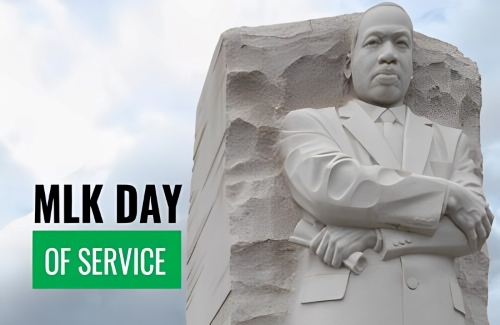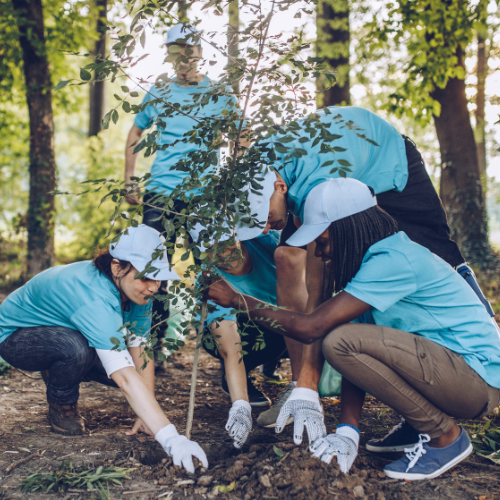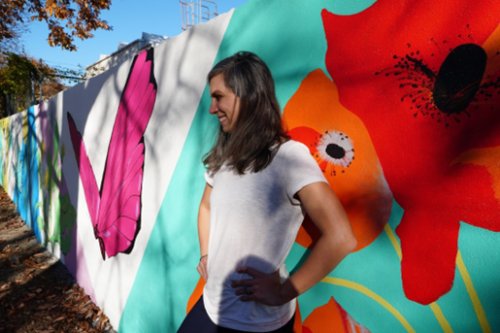January 9, 2024
 Did you know that Martin Luther King, Jr. Day is the only federal holiday designated as a National Day of Service? On January 15, 2024, we can volunteer as a way not only to honor the legacy of Dr. King but also to come together to improve our communities.
Did you know that Martin Luther King, Jr. Day is the only federal holiday designated as a National Day of Service? On January 15, 2024, we can volunteer as a way not only to honor the legacy of Dr. King but also to come together to improve our communities.
There are many ways, big and small, to give back.
Here are some service projects you can do with the youth in your life. Some of these activities may require coordination with others in your community or school.
10 Community Service Project Ideas

1. Plant a tree. Trees are invaluable assets to our communities, providing shade, cooling streets and buildings, providing homes for animals, and contributing to a community’s sense of place. Be sure to research which trees are best to plant in your area.
2. Become a Green Ribbon School. The U.S. Department of Education’s Green Ribbon Schools initiative recognizes schools for their sustainability efforts. Learn more about what it takes to become recognized and how PLT’s GreenSchools resources can help your school become greener and healthier!
3. Achieve Tree Campus K-12 Recognition. PLT partnered with the Arbor Day Foundation to provide curriculum resources that support schools interested in achieving Tree Campus K-12 recognition. Learn more about how your school can get involved.
4. Organize a litter cleanup. Pick up trash around your school, neighborhood, park, or shopping center. Grab a trash bag, some gloves, and head outdoors to clean up litter. This is a great teaching opportunity about the importance of putting trash and recyclables into proper receptacles. Not only does trash pollute waterways, forests, and our communities, but many animals think those tiny pieces of plastic or foil are pieces of food.
5. Plant a school or community garden. Gardens are a wonderful way to attract amazing pollinators – bees, birds, bats, and butterflies! Plus, if you plant a vegetable garden, you can share the fruits (or veggies in this case) of your labor with a local food bank.
6. Start a recycling program at your school. If you don’t yet have one, now is the perfect time to start a recycling program on campus. Teach students how they can reduce their waste with the Reduce, Reuse, Recycle activity from the Explore Your Environment: K-8 Activity Guide.
7. Make greeting cards out of homemade paper. You can send them to your family and friends, or even deliver kind messages to residents at a senior living center. Check out the Make Your Own Paper activity from the Explore Your Environment guide.

8. Design and paint a nature-themed mural at your school. For those cold, wintery days when children are cooped up indoors, design a nature mural that all can enjoy. Get creative and channel your inner artist!
9. Coordinate a food drive to donate to a local food bank. Contact your local food bank to see what items they need most. Many need non-perishable food items like canned food or monetary donations.
10. Help remove invasive species around your school or community. If you live close to a national park, many of them have volunteer opportunities on MLK Day to remove invasive species. Learn more about invasive species and what you can do to help.
Other Ways to Get Involved
Be sure to look for volunteer opportunities through your local parks and recreation department, at state or national parks, and other community-based organizations.
Americorps: https://americorps.gov/serve/volunteer/mlk-day
Points of Light: https://engage.pointsoflight.org/
Youth Service America: https://ysa.org/campaigns/mlkday/
Idealist: https://www.idealist.org/en/volunteer?actionType=VOLOP&q=mlk
National Park Service: https://www.volunteer.gov/s/global-search/FILTERNPS


